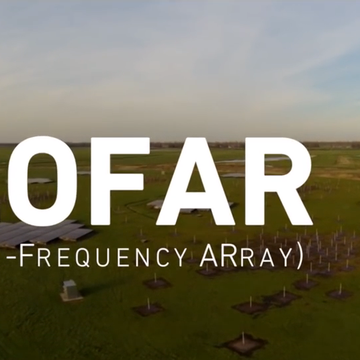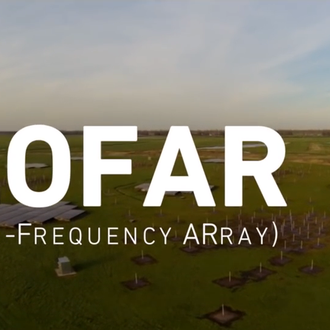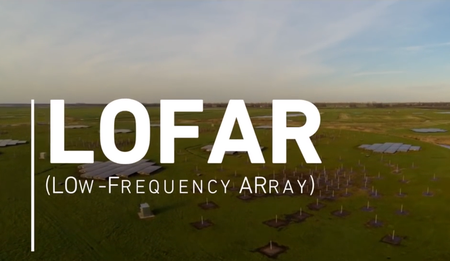Solar eclipse seen by the LOFAR RadioTelescope
The European radio interferometer LOFAR succeeded in taking unique pictures of the solar eclipse on March 20th as it is not possible by eye.
In the movie the path of the Moon’s shadow over the Sun is seen. The video shows the Sun at a frequency range of 115-175 MHz, which corresponds to a wavelength of about two meters. The radio emission originates from the Sun's outer atmosphere, the corona. This radiation is enhanced over active regions, where Sunspots are seen and strong magnetic fields dominate. These regions can be the source of solar eruptions. The eye-catching bright spot in the upper left of the picture marks such a region of high activity and is visible as a dark Sunspot at optical wavelengths.
Gottfried Mann from the Leibniz Institute for Astrophysics Potsdam (AIP) coordinates the solar observations with the LOw Frequency ARray (LOFAR). The solar eclipse was observed to gain specific information on the structure of the solar atmosphere. Christian Vocks, PI of the observations on March 20, explains: „Radio waves pass without problem through clouds in the Earth’s atmosphere, so that observations do not depend on weather.“ Still, the image of the Sun appears nebulous because: „Observations of the Sun through the Earth’s atmosphere with a radio telescope suffer from the same effect like if you try to take pictures from the bottom of a swimming pool.“
The now published movie is based on data gathered with the International LOFAR telescope (ILT). The Leibniz Institute for Astrophysics Potsdam (AIP) operates one of LOFAR's stations in Potsdam Bornim.
LOFAR is the Low Frequency Array designed and constructed by ASTRON. It has facilities in several countries, that are owned by various parties (each with their own funding sources), and that are collectively operated by the ILT foundation under a joint scientific policy. LOFAR is well suited for a wide variety of scientific topics, from the early universe to Earth's space environment.
Science contact:
Apl. Prof. Dr. Gottfried Mann, gmann@aip.de, +49 331 7499 292
Dr. Christian Vocks, cvocks@aip.de, +49 331 7499 327
The European radio interferometer LOFAR succeeded in taking unique pictures of the solar eclipse on March 20th as it is not possible by eye.
In the movie the path of the Moon’s shadow over the Sun is seen. The video shows the Sun at a frequency range of 115-175 MHz, which corresponds to a wavelength of about two meters. The radio emission originates from the Sun's outer atmosphere, the corona. This radiation is enhanced over active regions, where Sunspots are seen and strong magnetic fields dominate. These regions can be the source of solar eruptions. The eye-catching bright spot in the upper left of the picture marks such a region of high activity and is visible as a dark Sunspot at optical wavelengths.
Gottfried Mann from the Leibniz Institute for Astrophysics Potsdam (AIP) coordinates the solar observations with the LOw Frequency ARray (LOFAR). The solar eclipse was observed to gain specific information on the structure of the solar atmosphere. Christian Vocks, PI of the observations on March 20, explains: „Radio waves pass without problem through clouds in the Earth’s atmosphere, so that observations do not depend on weather.“ Still, the image of the Sun appears nebulous because: „Observations of the Sun through the Earth’s atmosphere with a radio telescope suffer from the same effect like if you try to take pictures from the bottom of a swimming pool.“
The now published movie is based on data gathered with the International LOFAR telescope (ILT). The Leibniz Institute for Astrophysics Potsdam (AIP) operates one of LOFAR's stations in Potsdam Bornim.
LOFAR is the Low Frequency Array designed and constructed by ASTRON. It has facilities in several countries, that are owned by various parties (each with their own funding sources), and that are collectively operated by the ILT foundation under a joint scientific policy. LOFAR is well suited for a wide variety of scientific topics, from the early universe to Earth's space environment.
Science contact:
Apl. Prof. Dr. Gottfried Mann, gmann@aip.de, +49 331 7499 292
Dr. Christian Vocks, cvocks@aip.de, +49 331 7499 327





